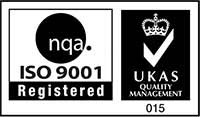CCTV system manufacturers and suppliers often quote a high megapixel rate as the final word in quality – but how much does that number actually matter?
The first thing to consider is the fact that security systems should be more focused on providing image usability rather than image quality. Adding more pixels simply increases resolution, something which is not often of prime concern. Colour rendition, frame rate, and aspect ratio are just as important, which brings us to the distinction between megapixel and Ultra High Definition Standard (or 4K) technology.
4K cameras must adhere to a rigorous set of criteria, ensuring:
- An 8-megapixel resolution to let professionals achieve more pixels with a wider view.
- A broader colour palette to better distinguish the hue of clothing, vehicles, and other objects.
- 30 frames per second (FPS) to ensure that all crucial details are captured.
- A 16:9 aspect ratio to provide broader coverage, or the ability to turn the ratio to corridor view (9:16).
In contrast, megapixel cameras are not bound by any such standards, so image usability often suffers. Here’s how the two technologies stack up.
Resolution
4K peaks at eight million pixels, while megapixel technology is able to scale well beyond that figure. Of course, resolution is only really required for identification, and just 80 pixels across the width of the face is enough for positive identification. Megapixel technology is only practically necessary when you need a wider angle lens to cover a broader area, but this is more of a niche situation.
Colour Fidelity
Colour rendition is tricky, but colour has vital forensic significance. 4K cameras work from a much broader palette, so the accuracy is uncanny in both real-time situations and post-incident review, especially when paired with 4K television displays. .
Frames per Second
For strong situational awareness a camera requires a high number of frames per second. A lower frame rate means missing vital forensic evidence, but 4k delivers a stunning 30 FPS. Megapixel cameras usually find their limit at a far lower range, meaning that seamless situational awareness is usually impossible.
Aspect Ratio
Wide-screen format (16:9) has revolutionised security coverage by providing a wider field of view, but there’s something else to consider. This is the ability to move the camera in order to represent a 9:16 aspect ratio. This is perfect for monitoring hallways and warehouses, and it’s another area where 4K trumps megapixel.
Your choice will really depend upon your own requirements, but it’s worth remembering that there’s more to consider than resolution. For more information, get in touch with us today.





